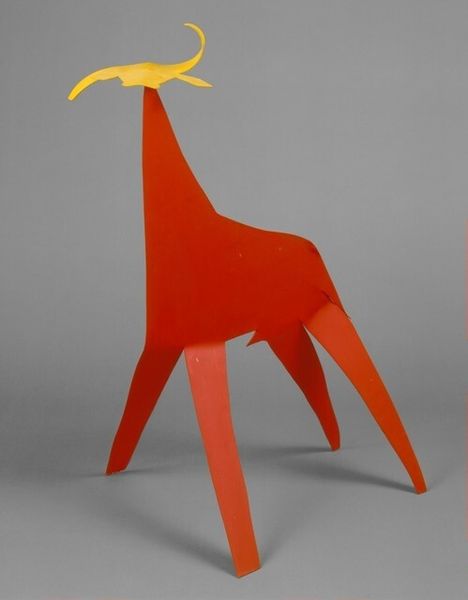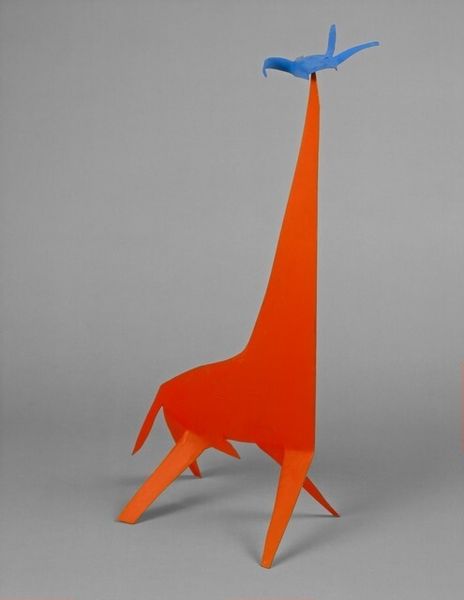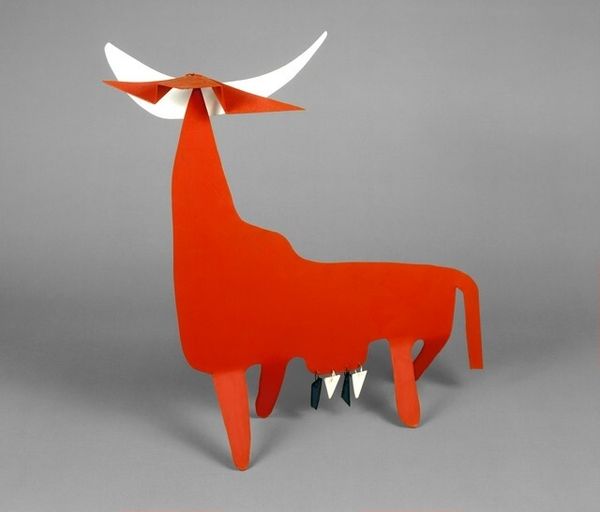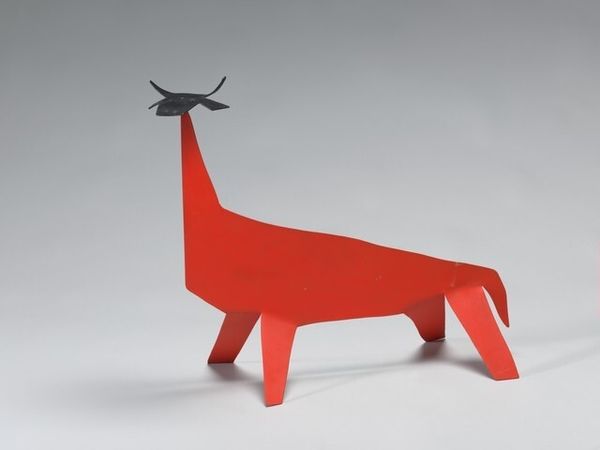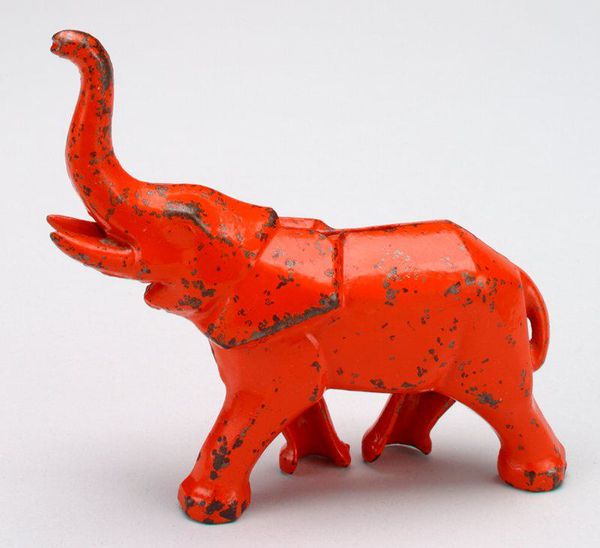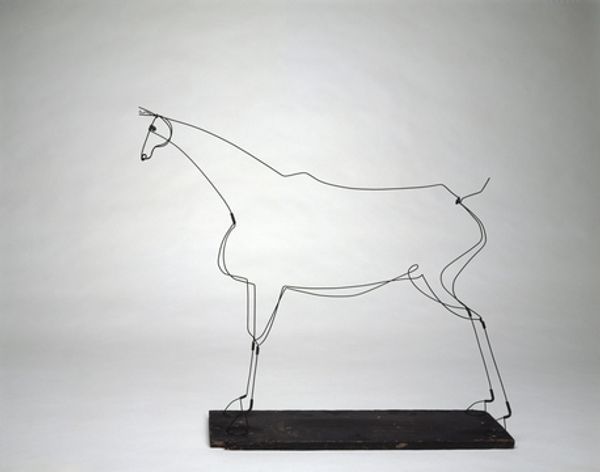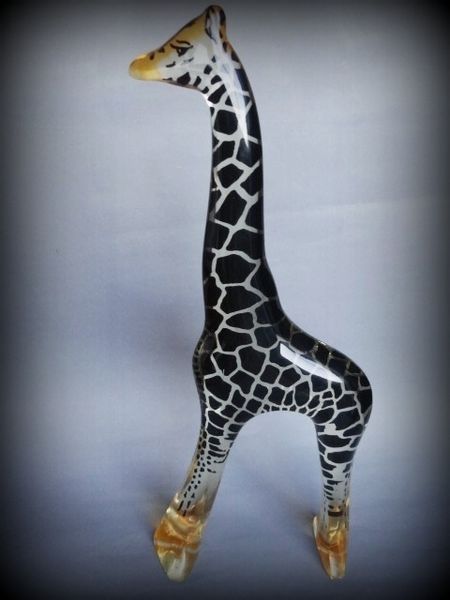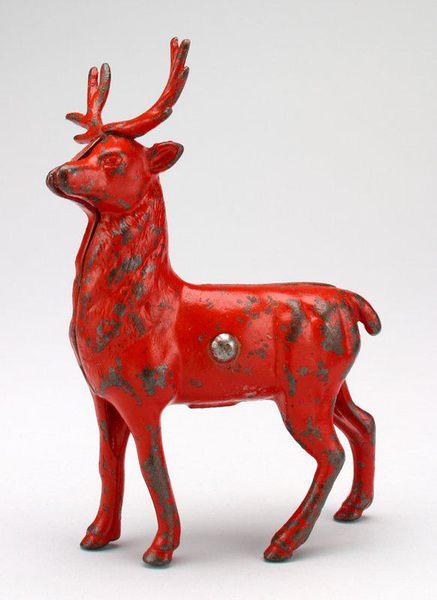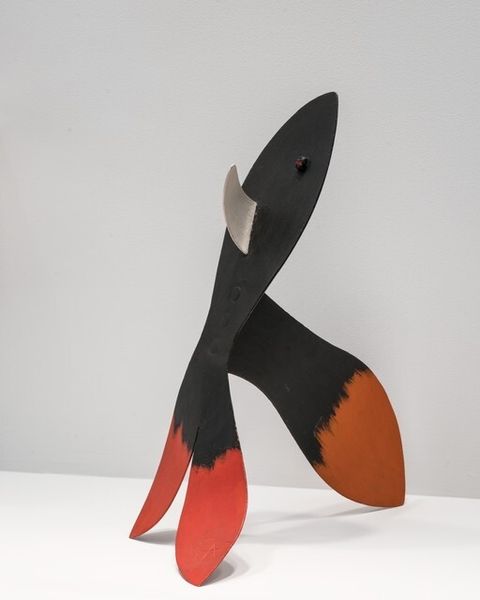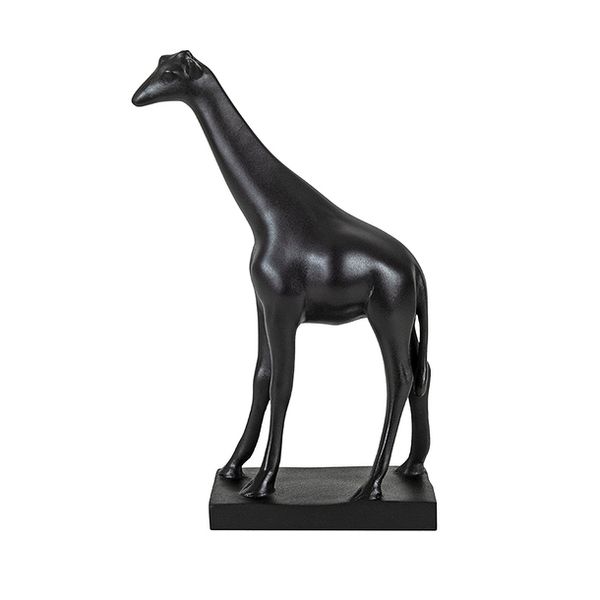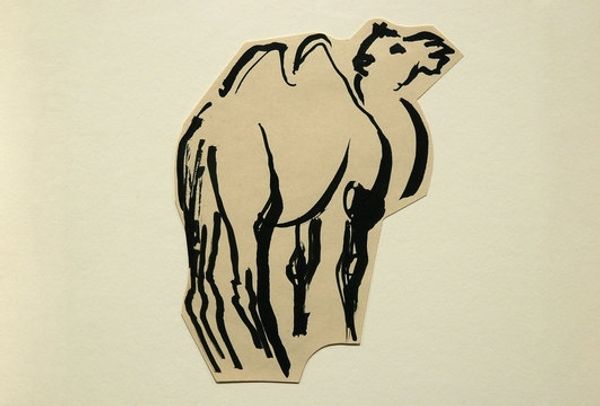
metal, sculpture
#
abstract-expressionism
#
metal
#
geometric
#
sculpture
#
modernism
Dimensions: overall (height): 97.5 cm (38 3/8 in.)
Copyright: National Gallery of Art: CC0 1.0
Curator: Looking at this bright metal sculpture, we see Alexander Calder’s "Horse" from 1970. What's your first impression? Editor: Playful, yet somehow also totemic. That vivid red color and the simplified form—it reminds me of children’s toys, but the subject gives it an ancient quality, like cave paintings of powerful animals. Curator: That tension is fascinating. Calder, of course, is best known for his mobiles, and his stabiles often explore similar themes of balance and dynamism, even in these stationary forms. In this case it reflects his fascination with circus imagery and simple abstract forms. The "Horse" came relatively late in his career. How does that symbolism hit you? Editor: I’m especially drawn to that splash of yellow at the top—it almost reads as a crown or some other marker of significance. Yellow is often associated with divinity, optimism and in juxtaposition with the boldness of the form's color it lends the sculpture a sense of pride. The form is a figure stripped down to the purest shape, and the head gesture amplifies its forward thrust, like it might lead to an apex or transformation. Curator: And there is a very social dimension in these works; we should keep in mind how deeply invested in radical social change so many artists were during this time period. These deceptively simple shapes challenge what is high versus low in art, it really asks a lot of art audiences who tend to gravitate to detailed artwork in bronze. What might this form say? It seems simple but bold, is it political? Or just simply playful? Editor: Perhaps both. Reducing an image to its most recognizable features can be powerful; it makes the animal universally accessible, bypassing cultural specificities, like some shared, primal memory of our relationship to horses. It is true that art had the challenge of reflecting shifting political landscapes in that time, and artists were pushing for accessible ways to make social commentary. Curator: The placement of it being set on the floor is also no mistake! What does this imply? Does it change our own viewpoint of its authority? What do we expect to feel? I always learn so much thinking about Alexander Calder's work and how they have become mainstays for public display today. Editor: It really highlights the ingenuity in simplicity; this allows many communities to interact with such powerful symbology, perhaps democratizing access.
Comments
No comments
Be the first to comment and join the conversation on the ultimate creative platform.
